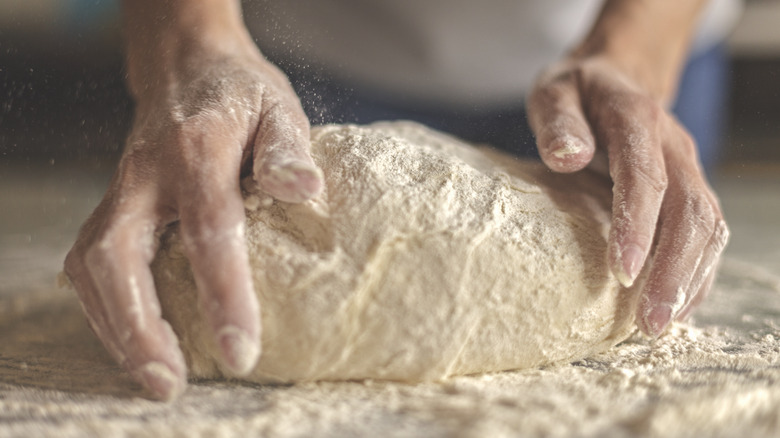Jacques Torres Says Slow Fermentation Is The Key To Perfect Pizza Dough - Exclusive
Pizza is a year-round meal. Whether it's a white pizza (using béchamel sauce) for the winter or a classic Margherita for the summer, the dish has seemingly never-ending possibilities — which is why you should try your best to perfect it (you know, for science purposes). There are quite a few methods that result in stacking some tasty pizzas, but Jacques Torres — pastry chef, chocolatier, and "Nailed It!" host — recommends the slow fermentation method.
Tasting Table attended the "Making the Perfect Pastry" event with Torres at the former Netflix Bites restaurant in Los Angeles. That's when he recommended "allowing [the pizza dough] to sit at least 48 to 72 hours prior to cooking." Why the long wait? Fermentation is the process in which a food or drink undergoes a chemical change due to the yeast and bacteria in it. In simpler terms, the carbs in the food or beverage break down into a simpler substance, like alcohol — in dough's case, adding depth of flavor and lighter texture from the carbon dioxide released during the process. And letting fermentation do its thing can change the way you experience your pizza.
Slow fermentation leads to a softer dough
According to Pizzeria Locale, fermenting pizza dough over a longer period of time leads to both enhanced and balanced flavor. The pizza dough rises slowly, making it more elastic, because the gluten in the mixture is able to form stronger bonds — which gives your crust a crunchier and chewy mouthfeel. Long story short: It improves the texture and makes your pizza taste really, really good.
Be careful about leaving out dough past 72 hours, though, because you can end up turning the dough sour and creating the opposite flavor effect that you want. If you don't have several days to wait for a slice, then you can allow a homemade pizza dough to rise for the typical 1 to 1.5 hours (the rule of thumb is to wait until it doubles in size). But we recommend trying out Jacques Torres' tip first so that you can determine for yourself where your taste buds stand on the taste of slow-fermented dough. If you're ready to get kneading, check out these 10 tips you need when making homemade pizza crust.

